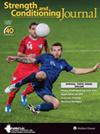使用全球定位系统设备来测量野外团队运动运动员的最大速度:一个叙述性的回顾
IF 3
4区 医学
Q2 SPORT SCIENCES
引用次数: 0
摘要
在各种运动中,冲刺时的最大速度是一个至关重要的方面。因此,从业者使用各种设备,如激光或雷达枪,定时门(TG)和全球定位系统(GPS),来评估冲刺表现。虽然高速相机被认为是评估最大速度(vmax)最准确的设备,但TG更常用,因为它们的实用性和可负担性。最近,GPS技术已经引起了体育科学界的关注,主要是因为它的应用特性,使“原位”数据勘探成为可能。然而,目前对于GPS在野外团队运动中的效度、信度和灵敏度尚未达成共识,GPS不仅用于测量最大V值,还用于跟踪短跑成绩的潜在变化。我们深入研究了GPS技术测量vmax的效度、信度和灵敏度的现有文献,并特别强调了其在团队运动中的应用。此外,我们还全面讨论了这些设备评估vmax潜在变化的能力。通过综合目前的研究成果,本文的叙述性综述揭示了GPS设备用于评估野外团队运动运动员的最大静脉量的优势和局限性。本文章由计算机程序翻译,如有差异,请以英文原文为准。
The Use of Global Positioning Systems Devices to Measure Maximum Velocity in Field-Based Team Sport Athletes: A Narrative Review
ABSTRACT The maximum velocity achieved during sprinting is a crucial aspect in various sports. Therefore, practitioners use various devices, such as laser or radar guns, timing gates (TG), and global positioning systems (GPS), to assess sprint performance. Although high-speed cameras are considered the most accurate equipment for assessing maximum velocity ( V max ), TG are more commonly used because of their practicality and affordability. Recently, GPS technology has gained attention from the sport science community, primarily because of its applied characteristics, enabling “in situ” data exploration. However, there is currently no consensus on the validity, reliability, and sensitivity of GPS in field-based team sports not only for measuring V max but also for tracking potential changes in sprint performance. We thoroughly examined the existing literature on the validity, reliability, and sensitivity of GPS technology for measuring V max , with a specific emphasis on its application in team sports. Furthermore, we offer a comprehensive discussion on the capability of these devices to assess potential variations in V max . By synthesizing current research findings, this narrative review sheds light on the strengths and limitations of GPS devices for assessing V max in field-based team sport athletes.
求助全文
通过发布文献求助,成功后即可免费获取论文全文。
去求助
来源期刊

Strength and Conditioning Journal
社会科学-运动科学
CiteScore
4.70
自引率
8.00%
发文量
49
审稿时长
6-12 weeks
期刊介绍:
Strength and Conditioning Journal is the professional journal for strength coaches, personal trainers, physical therapists, athletic trainers, and other health professionals working in the strength and conditioning field. The journal’s mission is to publish articles that report both the practical applications of research findings and the knowledge gained by experienced professionals.
 求助内容:
求助内容: 应助结果提醒方式:
应助结果提醒方式:


